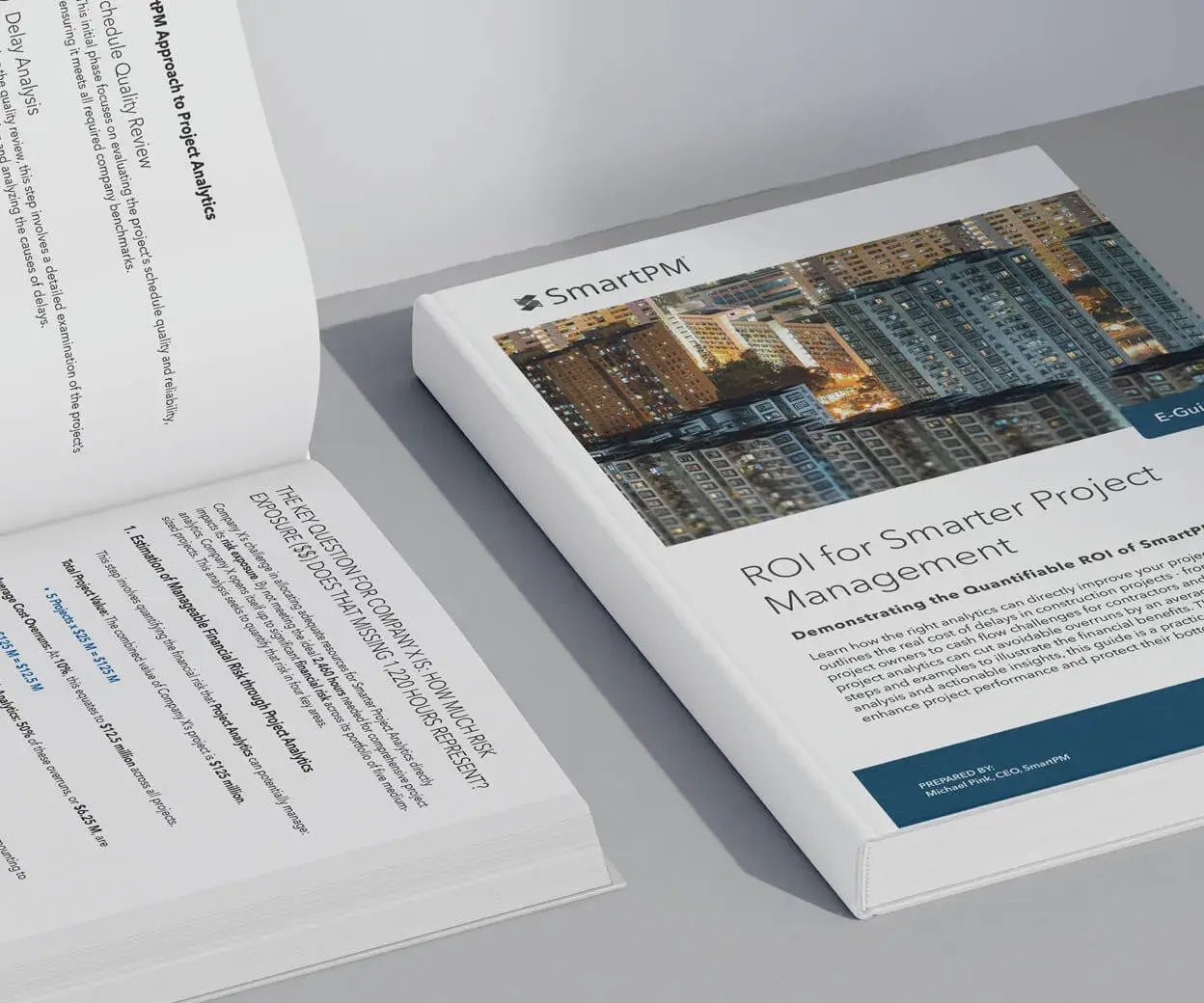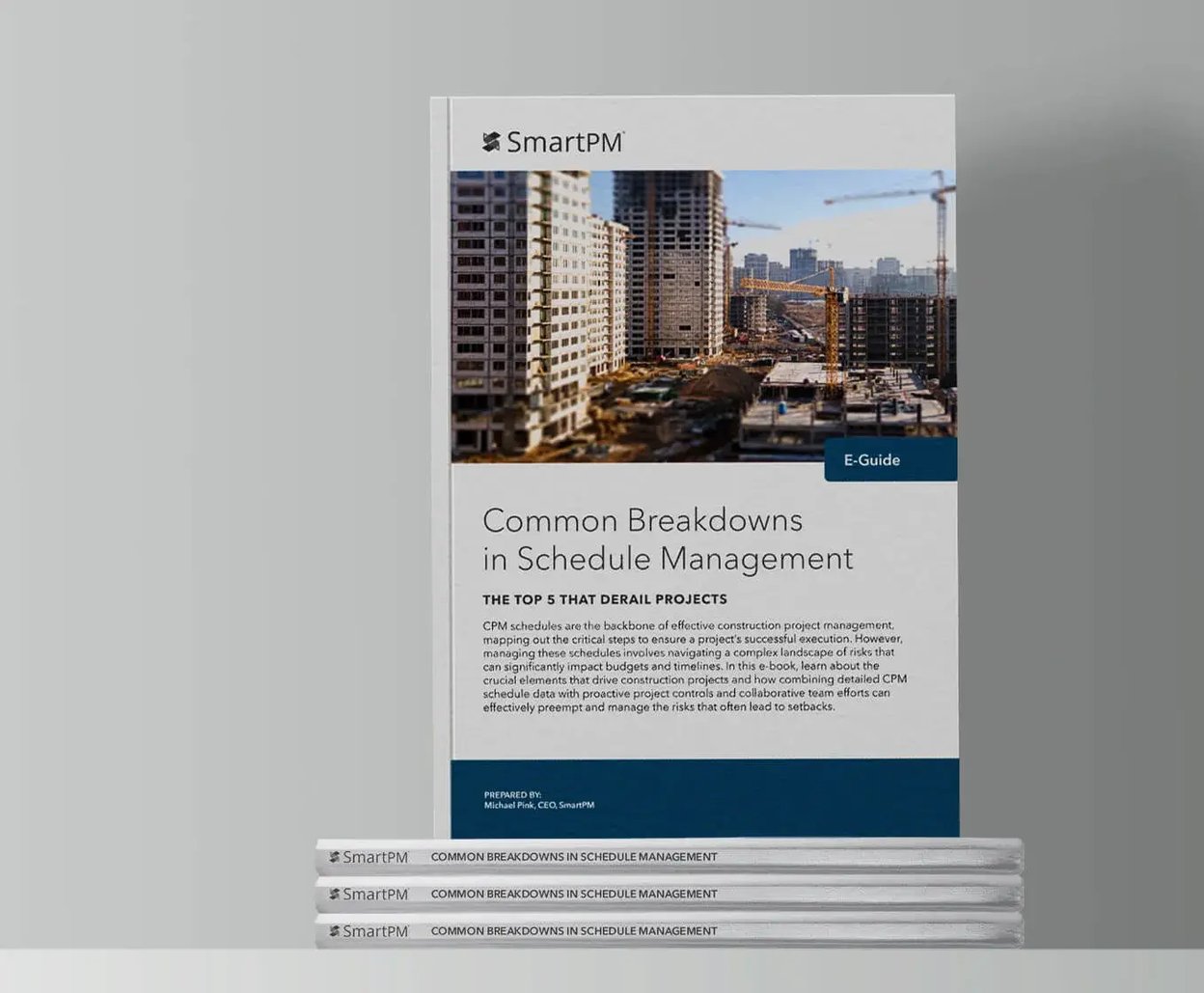Satterfield & Pontikes Construction
The Visibility Advantage: Unlocking Schedule Data’s Potential with Satterfield & Pontikes Construction
Fort Bend County Epicenter, Photographer – Satterfield & Pontikes Construction

Satterfield & Pontikes Construction
THE CHALLENGE
Satterfield & Pontikes Construction (S&P) found themselves up against four main areas of concern in schedule management:
- Lack of portfolio visibility
- Inability to see schedule changes and their impacts
- Uncertainty in accurately quantifying concurrent delays
- Shortcomings in forecasting and identifying trends
Visibility into the planned work for each update cycle was a particularly concerning issue, according to Seth Jeffrey, the company’s Director of Scheduling. “It’s one thing to say, ‘You should have started 50 activities, but you only started 35,’” he explained. “But there was no visualization showing the actual and remaining activities per month versus the baseline. Without this visualization – we couldn’t truly see how the schedule was playing out – or how logic or scope changes affected it.”
Forecasting was equally critical. “Looking at historical data is important, but how do we improve?” asked Jeffrey. “How do we mitigate overruns? If the report says our performance is bad, I want to know exactly how bad it is.”
Compounding these realities was the challenge of conveying the information to the field. S&P’s field teams build and maintain their project schedules, while the project controls team ensures the schedules comply with company and industry standards. S&P was using the DCMA-14 method as a guide, utilizing activity filters and custom Primavera reports to analyze the 14 parameters. But extracting the information proved to be quite cumbersome, and identifying critical trends was difficult if not impossible.
During this time, Jeffrey and his team utilized in-house processes to produce monthly status reports to let them know how projects were trending. Everything used to analyze their projects was built in Excel – siloed from the rest of the company. Additionally, these reports lacked a great deal of vital information – especially as it pertained to forecasting.
“We had no visibility into our activity start and finish distribution as compared to the baseline plan. We also couldn’t see how multiple delays impacted the schedule. Nor did we realize the magnitude of changes being made and their impacts on schedule quality and performance.”
THE SMART SOLUTION
“Now, with the data available in SmartPM, we can have meaningful conversations about these issues. We can discuss workloads and make adjustments proactively. Previously, these conversations weren’t as precise because we lacked the necessary analytics to invoke change,” said Jeffrey.
Getting to this place was no easy journey. Initially, Jeffrey was a little reluctant to look into the platform. Most offerings on the market did what could already be done within Primavera. But they still lacked windows-based delay analysis, useful reporting functionality, and a user-friendly interface for drilling into schedule changes.
“Every other tool started creating different formats to represent the same data. I would sit there, go through the demo, and feel like I could come up with the same information in P6. Now, the complexity of P6 lends itself to be a very capable and powerful tool, but one that few schedulers invest the time to take full advantage of. So, a lot of software companies are capitalizing on that and coming up with ten different ways to make a hamburger and sell it—the people who buy just don’t know any different.”
After evaluating several other software offerings, Jeffrey took the time to assess SmartPM at the suggestion of his COO. Immediately after seeing the presentation, he was impressed. He directed the company’s entire portfolio to be entered into the platform; as soon as leadership saw the platform at work, they were sold on its potential positive impact.
“Just prior to SmartPM, our in-house schedule reporting was limited, antiquated, and timely to produce. But, once we implemented SmartPM, we realized how comprehensive it was and that it could do much more.”
While SmartPM has always been about schedule analysis, Jeffrey’s expectations about its capabilities evolved – for the better. When he began using the software, he thought he already knew what data was important and disregarded some of the charts in the dashboards. But, once he performed deeper analysis, he realized that other charts had just as much value.
As with any software package, there was a learning curve, but it didn’t detract from the program’s overall simplicity of operation. “Users can explore and experiment without causing any issues. Unlike P6, where negligent use can lead to unintentional data changes, SmartPM is safer for users to navigate without risk,” said Jeffrey.
Satterfield & Pontikes Construction utilizes Primavera as their CPM scheduling software for building and maintaining their project schedules – SmartPM augments their existing processes, adding efficiencies and more value to the process.
“Once our project teams start poking around, pushing buttons, looking at the data, and asking questions, they understand it. SmartPM is a product that allows you to do your job the same way you have been without changing the whole process. It gives you a magnifying glass.”
With this magnifying glass, S&P’s project teams are now able to have earlier conversations about relief and acceleration – with positive results.
Jeffrey also noted that once he started using SmartPM’s new Custom Reporting feature, he identified other valuable analytics in addition to existing familiar data points. “That’s when the way we present this data started to change.”
THE RESULTS
According to Jeffrey, SmartPM analyzes data similar to other software but stands out because of its presentation. “Being able to see your portfolio in its entirety makes sense,” he said. “Now, with the data available, we can have meaningful conversations about any issues, large or small. We can discuss workloads and make adjustments proactively.”
The visual dashboard nature of SmartPM also helps Satterfield & Pontikes Construction get consistent, dependable information across all their projects, “It’s difficult to measure schedules consistently across projects without the capabilities of SmartPM. We now know how disadvantaged we were without it. Previously it required a lot of effort to extract the data, compile it, and then organize it in a format where it could be presented.”
Achieving consistency, when it comes to schedule quality, boils down to trust. If you don’t have a high-quality schedule, why would you trust it? To illustrate this point, Jeffrey offered an analogy, “If your mechanic disassembles your car to make a repair and then slaps it back together, do you want to drive cross-country in it? Probably not. That’s what I’ve been telling people. You have to have a quality schedule to trust the float it tells you.”
“In the beginning, I thought we would be focusing on certain metrics that, as of today, we aren’t – mainly because there are other, more important metrics in the software. One is the Activities Riding the Data Date. This goes in line with the Monthly Distribution Chart. If I see an increasing trend of activities riding the data date, it tells me we are not getting our work done and that we are potentially not properly forecasting.”
The true value here is the visualization. “It’s one thing to try and tell somebody that. But, when they see a chart and everyone knows when the chart starts trending up, it’s bad: that’s when you get people’s attention.”
Jeffrey shared an insightful example from his experience:
“Another example of that involves one of our biggest projects. Three months before the contractual end date, I was asked when I thought the project would be finished. According to the schedule, it was supposed to be done in 3 months. However, just by looking at the monthly distribution chart, I knew it would take four to five months.
I pointed out that, based on the current trend, they wouldn’t make the deadline unless they did X, Y, and Z. It had not been realized that over 430 activities had been forecasted to be completed in the current month. Once this was brought to their attention, everyone pitched in, increased manpower, and delivered on time.
SmartPM guards against extending the end date and aids in assuring timely project delivery. How could you manage the end date effectively without visibility into your forecasted performance?“
With more visibility comes more conversations – and part of this is because of the useful features enabled by the platform:
“Because of SmartPM, now that we have data readily available, we don’t have to wait two weeks before we receive the Project Performance Report,” Jeffrey said. “The amount of time SmartPM saves us, combined with the presentation of analytics, allows us to convey information about our projects more proactively than ever before.”
“SmartPM helps us to mitigate end date slippage, allowing us to deliver on time. What’s more, the platform has helped us develop higher-quality baseline schedules. It has proven its value time after time.”
"SmartPM helps us to mitigate end-date slippage, allowing us to deliver on time."

About Satterfield & Pontikes Construction
Satterfield & Pontikes Construction (www.satpon.com) is an ENR top 400 company and offers a full range of preconstruction, construction and consulting services to both public and private clients. The company, begun in 1989, provides a number of delivery methods, including General Contracting, Construction Manager at Risk and Design-Build. S&P is considered an innovator in construction management systems and has pioneered numerous technological advancements across its solid portfolio of wide-ranging projects, including educational, transportation, healthcare, commercial, governmental as well as retail distribution and manufacturing facilities.
In addition to Satterfield & Pontikes Construction, the S&P Family of Companies includes seven specialty construction subsidiaries including Eagle Contracting, Rollcon, Westway Construction, Greco Structures, Pontikes, Rocket Concrete Pumping and Prolégo. In addition to its headquarters in Houston, S&P has offices in Dallas, Austin and San Antonio and business units in New York and Los Angeles.







